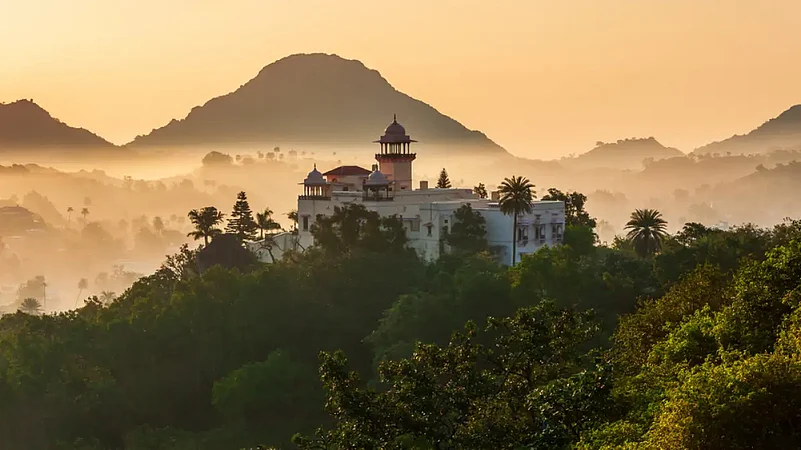Mount Abu’s reputation as a ‘honeymooners’ paradise’ does not do justice to the charms of this lovely hillscape. To begin with, it takes something special to be a lush hill station in a desert state. Then, there is the long history of Hindu myths that is attached to the lakes, caves, temples and ashrams tucked away in these rocky hills. Added to this, there are the more recent layers of Rajputana palatial and British colonial architecture through which one can amble one’s time away. Further, there are dense forests and trekking trails vanishing into them, not at some unapproachable distance but right in the heart of things. And most of all, there are the Jain temples of Delwara, where marble becomes rain, dew, fire, silk... leaving all but the tourist guides speechless.

Explore Mount Abu
A walk on the wild side
Mount Abu Wildlife Sanctuary is spread over 288 sq km. The park is another summer draw, for during the hot months of March and April, the champa, jasmine, mango and khajur trees that give the animals shade and cover are weighed down with blooms and fruit. A birdwatcher’s paradise, it has more than 250 species of birds. The most common among them is the grey jungle fowl. Also to be seen here are leopard, chinkara, sloth bear, wild boar and langurs. The Tourism Department has identified 17 nature trails that make for lovely hikes.
Dilwara Jain Temples

Originally Devalwara (home of the gods), the village called Delwara, houses a complex of five Jain temples. From the outside, the complex looks whitewashed, plain and quite disappointing. But this is before you actually step into the temples. Of the five temples here, two of the earliest temples, Vimal Vasahi and Luna Vasahi, have glorious marble work. The temples are marvels of sculpture, not architecture. Their plan—of a courtyard encompassing a circular mandap hall and a portico, all supported by pillars, leading to a sanctum—is shared by many Jain and Hindu temples of the Solanki era in western India.
Vimal Vasahi Temple
Named after minister Vimal Shah of the Gujarat Solanki court, who built it in 1031, this temple is dedicated to the first Jain Tirthankara Adinath (also called Rishabhdev). Each block of marble here—whether it makes a pillar or a ceiling slab—is carved with the care, precision and detail with which one puts a thread in a needle. The pillars in the entrance portico and in the corridors surrounding the shrine have figurines carved with great detail of movement, clothes and jewellery. Sixteen four armed Vidyadevis preside on the pillars supporting the dome, each holding her own symbol.

Luna Vasahi Temple
Locally called the Devarani-Jethani Temple, this was built by two brothers—Vastupal and Tejpal— ministers of a Gujarati Jain king, in 1230, and is dedicated to the 22nd Tirthankara Lord Neminath. Its beauty is as simultaneously awe inspiring and serene as the first temple. Luna Vasahi’s literal centre of attraction is the gigantic inverted lotus that ‘hangs’ from its dome. The lotus is made of hundreds of delicate tiny marble petals that look as if they were made of luminous crisp paper.

Viewpoints
For some more sightseeing, or trekking, head towards Toad Rock (SW of the Raghunathji Temple with its 14th century idol of Lord Rama near Nakki Lake) or Sunset Point (2km south-west from town on Sunset Point Road), the latter for its panoramic views. There is also an amusement park for children at Sunset Point, ideal for a family outing. At Guru Shikhar, the highest peak (5,650ft) of the Aravallis, located 15km out of town, one may combine views of the range with a visit to the Dattatreya Temple (Shiva). The forests surrounding these sites are home to wildlife, so trekking late into the evening is not really recommended.
















